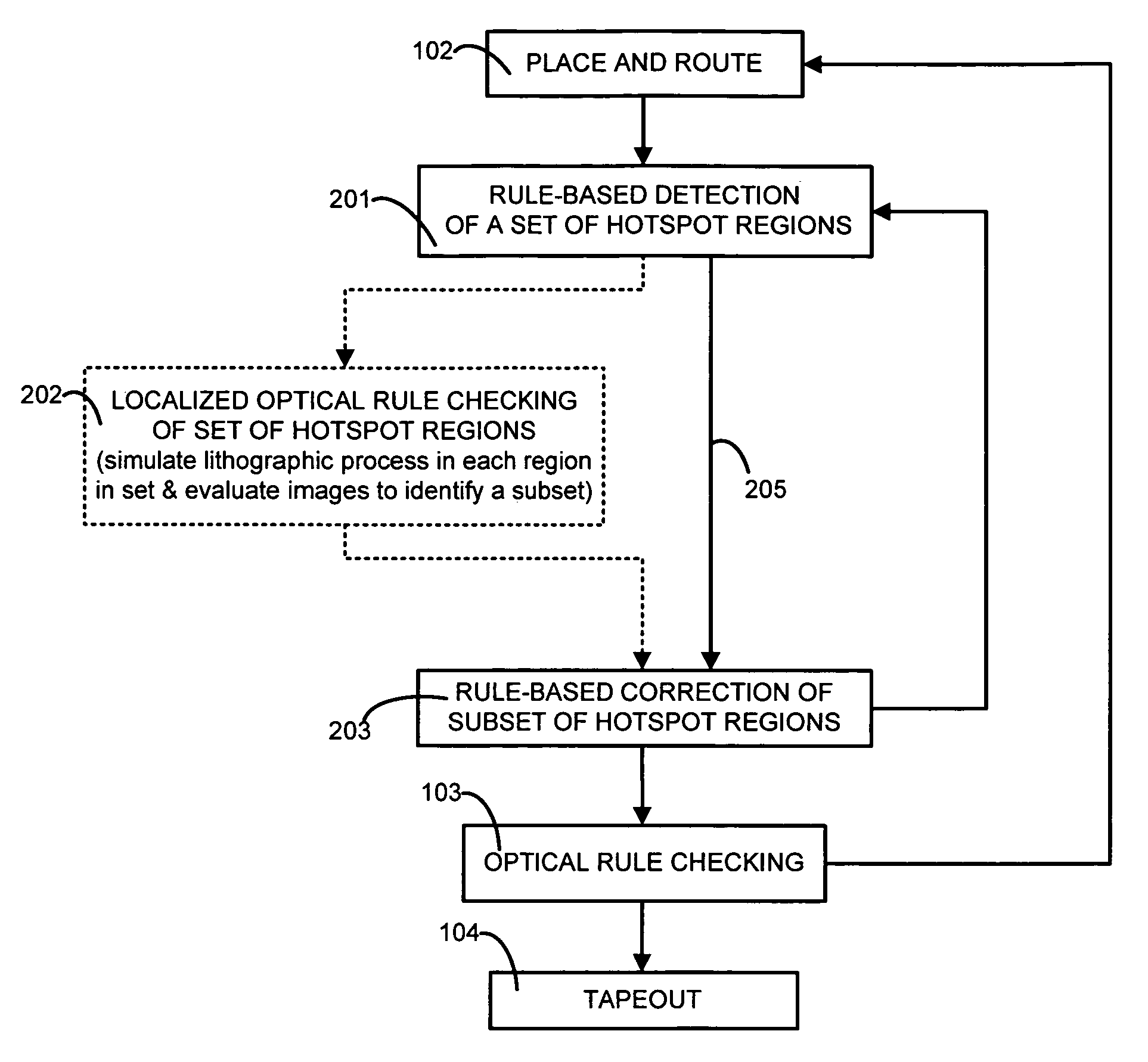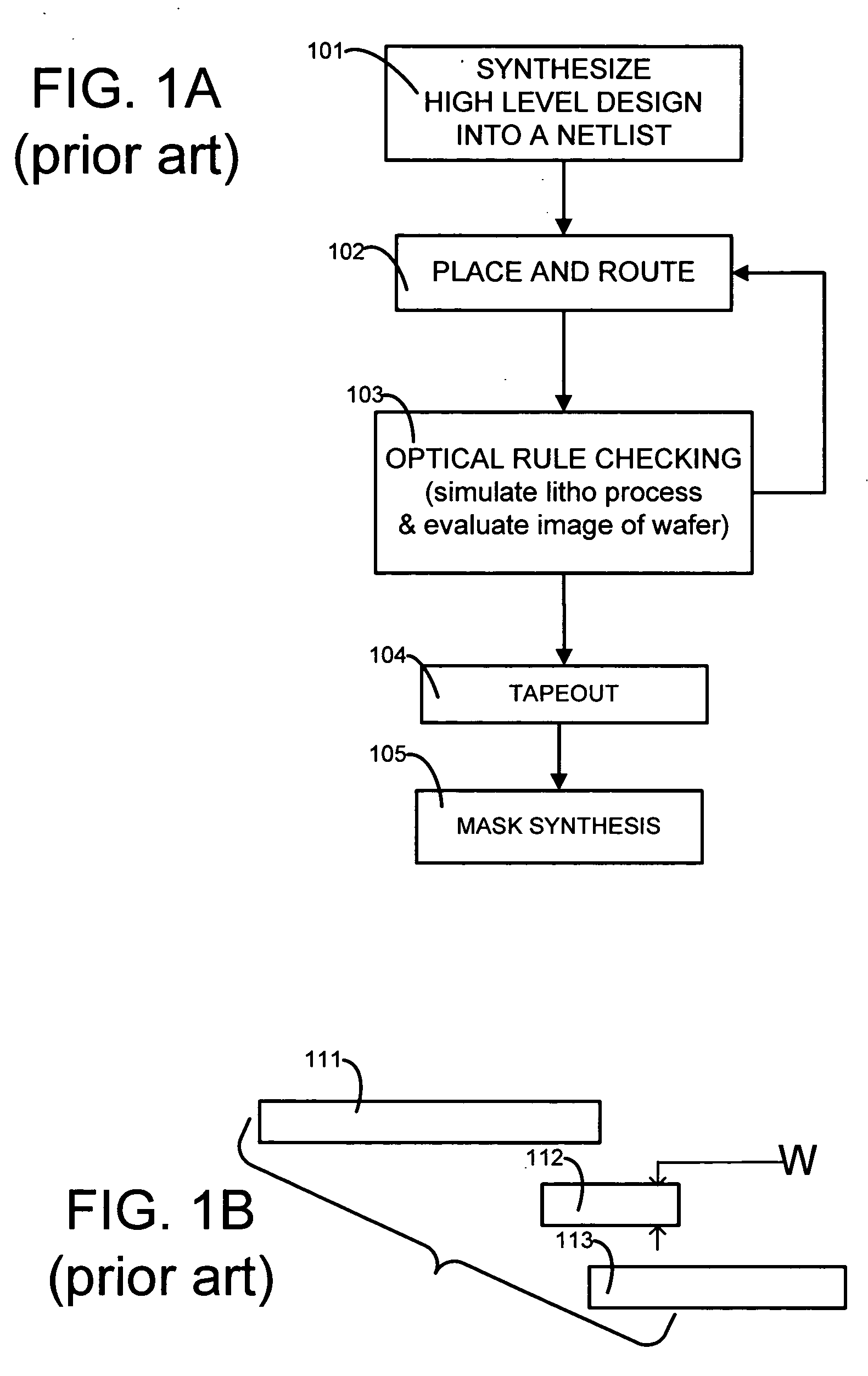Fast lithography compliance check for place and route optimization
a compliance check and optimization technology, applied in the field of layout design, can solve the problems of slow and laborious manual fixing of hot spots, increasing difficulty in achieving reasonable fidelity (including resolution and depth of focus), and slow use of orcs to detect hot spots
- Summary
- Abstract
- Description
- Claims
- Application Information
AI Technical Summary
Benefits of technology
Problems solved by technology
Method used
Image
Examples
Embodiment Construction
[0030]A computer 150 (FIG. 10A) is programmed, in accordance with the invention, to perform acts 201 and 203 (FIG. 2A) in any order relative to a place-and-route operation 102 and an ORC operation 103.
[0031]Operation 102 is performed using any prior art place-and-route tool, such as the Astro product available from Synopsys, Inc. Moreover, in prior art ORC operation 103, a simulation is performed of a lithographic process to be used to build the integrated circuits in a semiconductor wafer, and the simulation generates image intensities to which are applied one or more evaluation criteria such as measurement of critical dimension of contours. Each contour in a simulated image represents a side or a corner of a polygon in the layout input to the simulation.
[0032]In some embodiments of the invention, computer 150 is programmed to perform prior art ORC operation 103 as follows: (1) Simulate wafer image intensities at a given defocus condition, (2) Use a threshold on the wafer image int...
PUM
 Login to View More
Login to View More Abstract
Description
Claims
Application Information
 Login to View More
Login to View More - R&D
- Intellectual Property
- Life Sciences
- Materials
- Tech Scout
- Unparalleled Data Quality
- Higher Quality Content
- 60% Fewer Hallucinations
Browse by: Latest US Patents, China's latest patents, Technical Efficacy Thesaurus, Application Domain, Technology Topic, Popular Technical Reports.
© 2025 PatSnap. All rights reserved.Legal|Privacy policy|Modern Slavery Act Transparency Statement|Sitemap|About US| Contact US: help@patsnap.com



